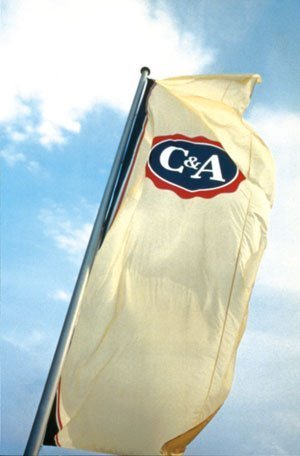
All organisations have a responsibility to their stakeholders. These are individuals and groups who have a stake in the running of the organisation and in the consequences of its activities. Stakeholders may include shareholders, suppliers, customers, employees and managers, as well as society as a whole. Increasingly, stakeholders are demanding a high level of ethical standards from the organisations with whom they are involved. In recent years, the media have exposed organisations which have fallen short of the standards expected of them by their stakeholders. One example of unacceptable ethical standards is the exploitation of child labour in South East Asia, Africa, Latin America and other emerging markets.
Organisations have to heed their stakeholders. Customers are increasingly discerning and choose whether to give their custom to a particular organisation or to go elsewhere. An organisation with unacceptable ethical standards will quickly lose business. Similarly, employees can choose whether or not to work for a certain organisation, and shareholders carefully select organisations in which to invest their money. Therefore, to satisfy stakeholders, an organisation needs to develop Codes of Conduct which state clearly the way in which that organisation will carry out its business, i.e. how it will behave in a given circumstance.
This case study examines how C&A has created Codes of Conduct, not only for dealing with suppliers but also for the conduct of its own executives. These Codes of Conduct have been clearly researched to achieve a clear focus on specific ethical standards.
C&A
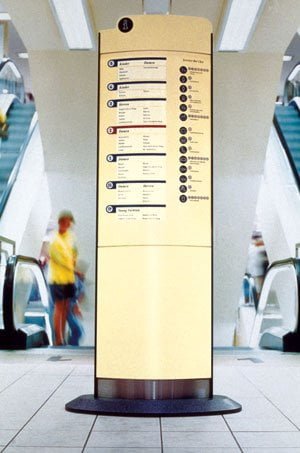
The name C&A comes from the initials of the two brothers who opened the first C&A store in Sneek, Holland, in 1841. Today, the company is still owned and operated by the Brenninkmeyer family. Its success is built on family values and traditions of high standards of personal and business behaviour.
The first C&A store opened in Great Britain 75 years ago in London’s West end. In the 1930s, C&A responded to the economic depression by declaring: ‘To further the movement for national economy, C&A has decided to deal only in those garments which can be produced at a price within the reach of the average purse’. Over the years, the Company has further developed to become a successful, internationally recognised retailer, with a very specific business proposition – to offer the latest fashion at the best possible quality, at value for money prices, which the general public can afford.
The early 1990s heralded a period of Europeanisation for C&A which has meant centralising its buying operation, EBSCO (European Buying Services Company), in two centres (Brussels and Dusseldorf) with multinational buying teams sourcing merchandise world-wide for all the C&A stores across Europe. The Code of Conduct for the Supply of Merchandise has been updated and its operation independently audited.
Codes of conduct at C&A
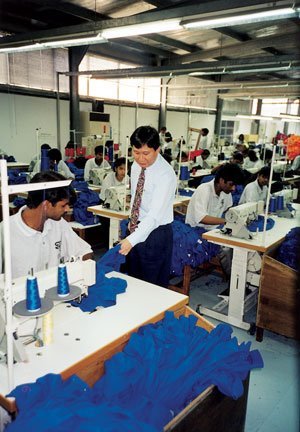
A mission statement is a general statement of intent by an organisation which declares to stakeholders what the core organisational values are and how the organisation intends to achieve its overall objectives. C&A has redefined its mission statement to combine traditional values and strengths with an added focus on the importance of the retail customer, who is the core reason why the Company exists. Everything C&A does is ‘on behalf of the customer’ where a ‘lifetime’ relationship is established through improvement, innovation and evolution. Implicit in this lifetime relationship is that C&A conducts its business with an agreed standard of responsibility. Its two Codes of Conduct – one for the supply of merchandise and one for executives – make sure that this standard is achieved.
The Code of Conduct for the Supply of Merchandise describes the standards of business conduct which C&A sees as fundamental when dealing with merchandise suppliers.
Many suppliers are from different countries with cultures and values different to those of Western Europe. C&A, however, believes that certain basic standards are universally valid and must apply therefore to all commercial activities in which it engages.
The key aspects of C&A’s Code of Conduct for the Supply of Merchandise are set out below:
Supplier relationships We seek to develop long-term business relationships with our suppliers who should have a natural respect for our ethical standards in the context of their own particular culture. Our relationships with suppliers are based on the principle of fair and honest dealings at all times and in all ways. We specifically require our suppliers to extend the same principle of fair and honest dealings to all others with whom they do business – including employees, sub-contractors and other third parties. For example, this principle also means that gifts or favours cannot be offered nor accepted at any time.
We will always comply fully with the legal requirements of the countries in which we do business and our suppliers are required to do likewise at all times. The Intellectual Property
Rights of third parties will be respected by all concerned.
Employment conditions
In addition to the general requirement that all suppliers will extend the principle of fair and honest dealings to all others with whom they do business, we also have specific requirements relating to employment conditions based on respect for fundamental human rights. These requirements apply not only to production for C&A but also to production for any other third party.
- The use of child labour is absolutely unacceptable. Workers must not be younger than the legal minimum age for working in any specific country and not less than 14 years, whichever is the greater.
- We will not tolerate forced labour or labour which involves physical or mental abuse or any form of corporal punishment.
- Under no circumstances will the exploitation of any vulnerable individual or group be tolerated.
- Wages and benefits must be fully comparable with local norms, must comply with all local laws and must conform with the general principle of fair and honest dealings.
- Suppliers must ensure that all manufacturing processes are carried out under conditions which have proper and adequate regard for the health and safety of those involved.
The realisation of environmental standards is a complex issue – especially in developing countries. It therefore needs to be continuously reviewed within the limits of what is achievable per country. We will work with our suppliers to help them to meet our joint obligations towards the environment. C&A recognises and respects the freedom of employees to choose whether or not to associate with any group of their own choosing, as long as such groups are legal in their own country. Suppliers must not prevent or obstruct such legitimate activities.
Disclosure and inspection
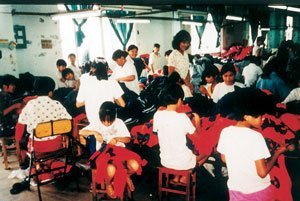
We require suppliers to make full disclosure to us of all facts and circumstances concerning production and use of sub-contractors. All C&A suppliers are obliged to make their sub-contractors aware of, and comply with, the C&A Code of Conduct. Additionally, our suppliers are required to authorise SOCAM, the auditing company appointed by C&A, to make unannounced inspections of ‘The use of child labour is absolutely unacceptable’ any manufacturing facility at any time. An actual example of this was when, in January 1997, an inspector filed the following report on an Indian factory:
“When I went into the workshop I saw a 10 year old boy folding clothes. A bit further on three girls and a boy aged between 12 and 13 were counting pieces of fabric. I started to take
photographs. Immediately the boss asked, in the local dialect, why the children hadn’t been removed He ordered everyone to say that they were aged between 16 and 17”.
After detailed investigation and upon confirmation that the regulations in the Code of Conduct had been infringed the Belgian supplier who had subcontracted the work to the factory in question was summoned to C&A. All merchandise orders – both current and
planned – were cancelled. However, if a supplier proposes an acceptable corrective plan and agrees to modify his working practices to adhere to the Code, and does so to the agreed standards, the situation will be reassessed by C&A’s Sourcing Department and his supplier status may then be re-established. The Code for Suppliers is subject to an ongoing process of improvement and development which allows C&A to assess its ethical performance to maintain best practice.
Implementing the Code

Having created a Code of Conduct, C&A has had to put it into practice. A detailed communications exercise makes sure that each supplier fully understands the Code and signs an agreement to abide by its regulations. This Code is routinely monitored and audited as part of the day-to-day management process. This involves unannounced on-site inspections and a requirement of detailed record keeping of employment conditions.
Therefore, when C&A suspects that one of its suppliers (or a third party) may be in breach of the agreed Code of Conduct, an unannounced visit takes place and, where the regulations have been violated, this fact is immediately reported to C&A’s Sourcing Department. Depending on the seriousness of the violation, action, which can result in the cancellation of existing merchandise orders and future contracts, may take place.
The importance of monitoring
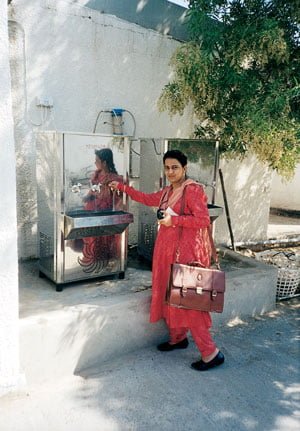
Effective monitoring and the evaluation of policies and actions is generally carried out by an independent organisation which examines objectively all aspects of the business. C&A uses the services of an organisation called SOCAM (Service Organisation for Compliance Audit
Management) to monitor and evaluate its activities.
SOCAM is a limited liability company, registered in Belgium. The name reflects its objective to oversee and monitor the agreed level of responsible business standards in merchandise buying on behalf of all the C&A European retail companies. In particular, SOCAM has a clear brief to detect and prevent the exploitation of those workers who produce merchandise for C&A, particularly the use of child labour and all forms of illegal labour. It also has a specific interest in areas of environmental standards, health and safety and levels of remuneration.
SOCAM is separate from and is structured to be fully independent of the Buying function. The Director of SOCAM has extensive first-hand knowledge of supplier operations throughout Europe, the Far East and Africa. Many of C&A’s suppliers are in the Far East where SOCAM operates through a subsidiary company, SOCAM Service Pte Ltd, located in
Singapore. SOCAM has full and independent authority to monitor those standards defined by C&A’s ‘Code of Conduct for the Supply of Merchandise’ and by the legally binding requirements contained in every merchandise order.
When SOCAM first started its auditing work, every supplier working for C&A was asked to supply a list of their factories and those of their subcontractors. This was to allow SOCAM inspectors to make unannounced visits to check those factories. Initially, only 60% of suppliers responded. SOCAM’s managers then had to meet individually the other 40% of suppliers to explain what SOCAM was trying to achieve. After nine months, 2,500 supplier files were compiled and the visits started. Eight inspectors carry out over 1,000 visits each year. The audit involves painstaking work. Where inspectors are not sure about the age of a worker they may ask to see a birth certificate. In a small number of cases, suppliers have tried to employ delaying tactics such as when a Chinese factory director ordered that all doors be closed because the SOCAM inspector was taking photographs. The inspector only just escaped.
C&A believes the $3 million a year spent on SOCAM to be money well spent because not only does it add real value to C&A’s brands, it also contributes to the strong ethical image of C&A. Between July 1996 and January 1998, 50 suppliers received written warnings that they were not achieving the standards required by the Code of Conduct. Where SOCAM is sure that unethical practices are taking place, all C&A orders to that supplier are immediately suspended. Over 80 suppliers have been penalised in this way since SOCAM started its audit work for C&A. Business can only be reinstated after a convincing ‘Corrective Plan of Action’ is put in place.
Conclusion
C&A also has a Code of Conduct for its executives. The Code recognises that there are mutual obligations and responsibilities not only between the Company and its people but also between each individual to all other colleagues at all levels. The Code also recognises obligations and responsibilities to people outside the Company – to customers, to suppliers and to the communities in which C&A people live and work.
The Code sets out a number of essential personal qualities and guidelines on those standards of behaviour required at C&A. These include Integrity, Professionalism, Commitment and agreed Management Style. The guiding principle of Integrity is seen as being at the heart of C&A’s set of values and is defined in the following way:
- Dealing fairly and honestly at all times and in all matters – both in business and in private life.
- Complying fully with legal and regulatory requirements – regarding these as the minimum standard to be observed.
- Avoiding all circumstances which could compromise personal integrity or reduce the individual’s freedom to take independent commercial decisions.
- Avoiding any relationship or situation which could compromise our collective ability to work together as a team; which introduces an element of conflict of interests or which goes against the basic principle of respect for the individual.
- Taking steps to ensure that the organisation is made aware of any personal situation or circumstance which could be relevant in the light of this Code. Making adequate and timely disclosure – without being prompted.
This part of the Code sets out that executives will take an active approach to self-development in order to optimise their levels of knowledge and skills. They will be flexible and embrace change, take responsibility for their own actions and have the sensitivity to understand the full impact of any decisions they make take on others.
C&A executives are expected to be loyal and committed to the organisation and to each other, and to respect people both within and external to the organisation.
Management Style
Finally, the Code sets out that the management style will:
- be open and honest and based on effective communication
- be based on teamwork and joint effort which encourages the maximum contribution
- encourage contribution of ideas from all
- involve everyone in the coaching and development of others
- strive to build consensus (shared agreement) rather than compromise
- involve discretion and confidentiality in commercial and personal matters.
Every executive has a direct responsibility to help maintain and enhance C&A’s culture, based on personal integrity, teamwork, mutual trust and respect for the individual. The responsibility is also shared with every colleague and with the organisation in total.
